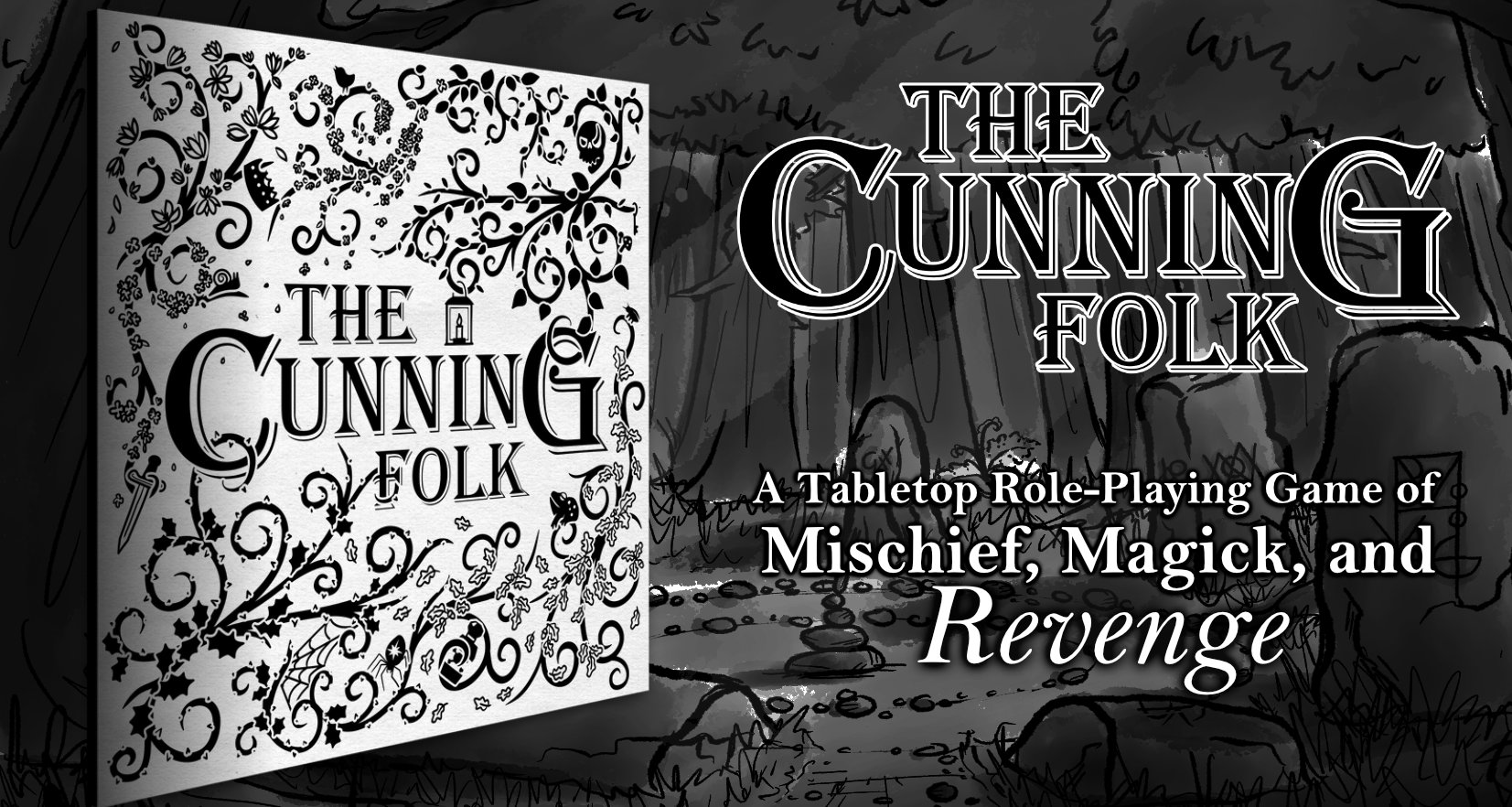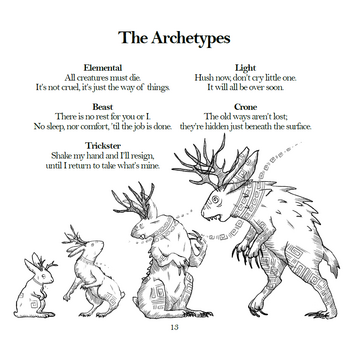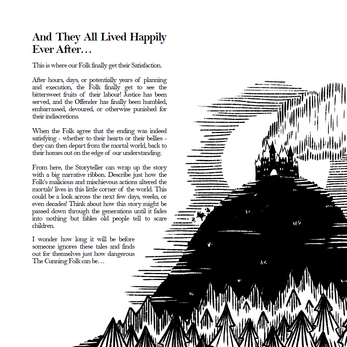
The Cunning Folk
A downloadable game
After months of only being available digitally, The Cunning Folk is finally coming to print!
Join the Kickstarter and support the project here:
https://www.kickstarter.com/projects/emilygreymoore/the-cunning-folk-ttrpg
Fully funded in less than 3 hours!
What is The Cunning Folk?
The Cunning Folk lurk just outside of our perception. They play tricks on us by hiding our socks when we’re already running late or swapping sugar for salt and spoiling our cups of tea. Sure, the odd individual may run afoul of the Folk and end up eaten. But it was probably their fault, for neglecting to leave a bowl of milk by their front door on the night of the spring equinox, anyway.
Honestly, sometimes I wonder why more people don’t vanish into the mists. No one seems to think much of manners these days.
You never can tell how the Folk might get their revenge – but they will have their satisfaction.
The Cunning Folk presents you the delightful opportunity to be one of these wickedly handsome and verily cunning Folk. As a group, you’ll be using your Magick and Luck to create a whole heap of Mischief, all to seek devilish revenge against your Offender in the most devious and hilarious ways you can think of!
Just for a little bit, mind you. Let’s not be greedy.
“A slight can’t go unpunished, and this mortal will soon come to understand the true meaning of ‘an eye for an eye’.” - Drubsnort the Deviant
- GM led game suitable for 2+ players (1 GM and 3-4 players for best experience)
- A 32 page fully illustrated book with all the information you need to play
- Rules-Lite D6 system designed to be played through in one sitting - perfect for one shots!
| Updated | 4 days ago |
| Status | On hold |
| Category | Physical game |
| Rating | Rated 5.0 out of 5 stars (7 total ratings) |
| Author | emilygreymoore |
| Genre | Role Playing |
| Tags | Dark Fantasy, Dark Humor, Fairy Tale, Folklore, Multiplayer, rules-lite, Tabletop, Tabletop role-playing game |
| Average session | A few hours |




Comments
Log in with itch.io to leave a comment.
Will the game be available digitally at any point in the future again?
It will! The Kickstarter will be offering the digital copy for the same price as here and you'll be able to get it as soon as the Kickstarter funds. Then it'll be back here as normal :)
Are there plans for a physical book?
There are! I'm creating the Kickstarter as we speak, and the aim is to have it launching end of Feb 2025, so watch this space!
Sweet! Repy to this comment with a link please once you have!
Here's the pre-launch!
https://www.kickstarter.com/projects/emilygreymoore/the-cunning-folk-ttrpg
for how many players is this game?
Hi!
It’s GM led and can have any number of players that works for your table. I would say 3 or 4 players to 1 GM is probably best though.